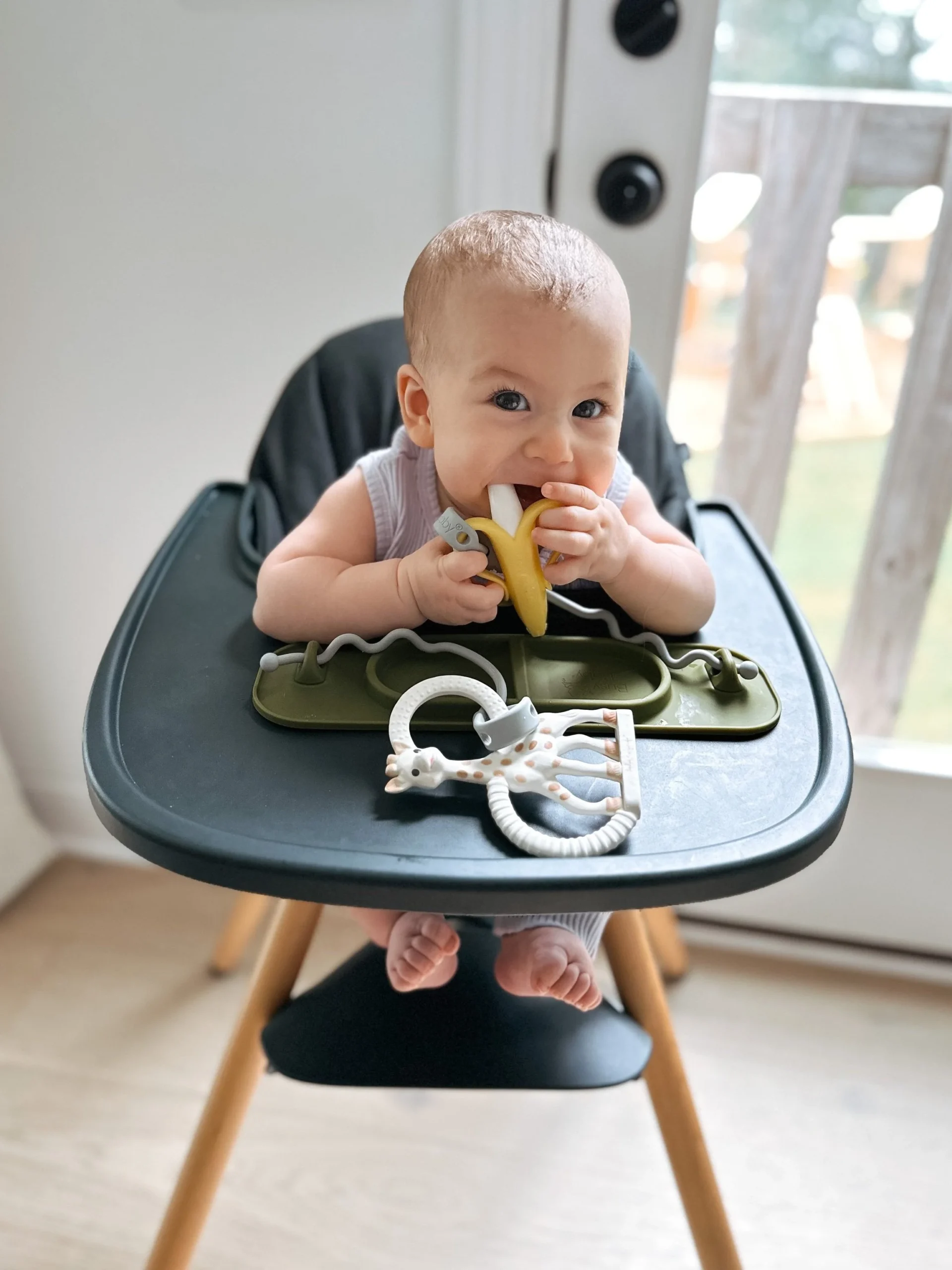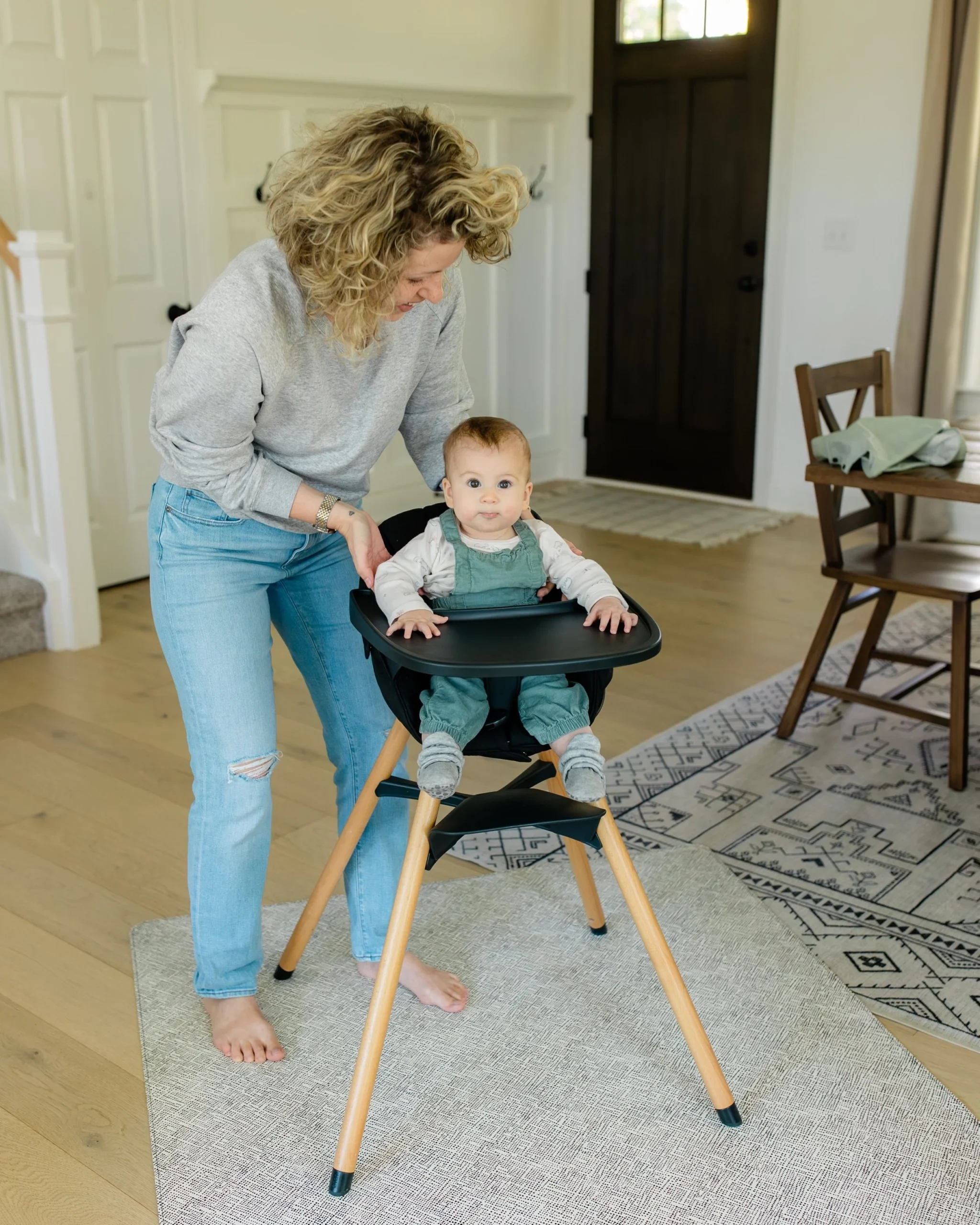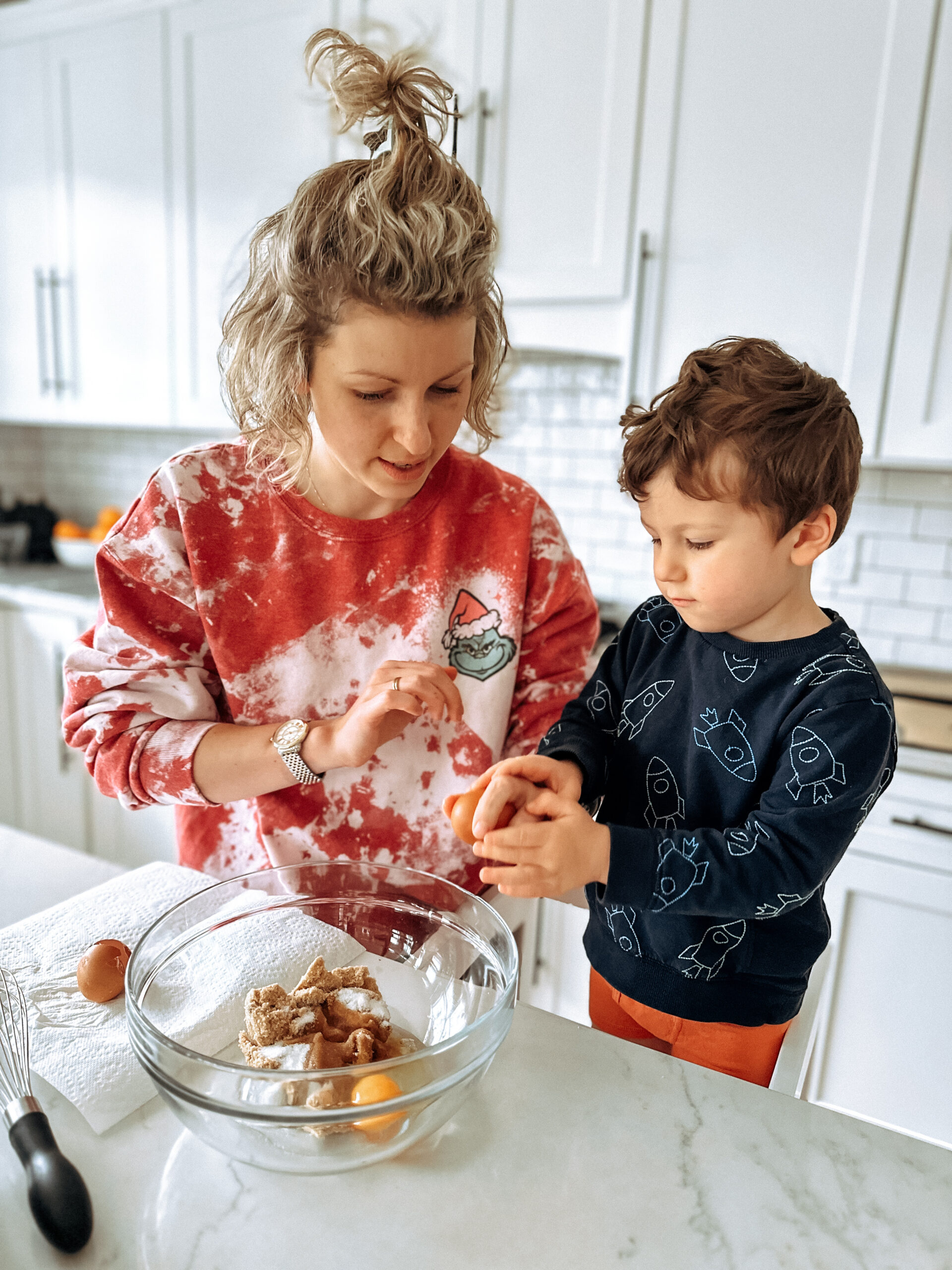This page contains affiliate links. We will receive a commission on qualifying purchases using these links.
Starting solids can be such an exciting, yet daunting milestone! Is your 5-6 month old staring you down during dinner, so much so that you think they’re ready for their first tastes? Interest in food is great, but let’s chat about one of the most important readiness signs: SITTING! A big indicator your child may be ready for solids is their ability to sit up well.
Sitting up with strong head and neck control ensures that baby will be able to move food in, out, and around their mouth safely.
Postural support is important for all feeding skills.
When we are bottle or breast feeding, we check to make sure the ears, shoulders, and hips are aligned. Next time you’re feeding baby, check their body position. You may notice quicker or more calm feedings when baby’s body is aligned at “midline”; that is, their spine is aligned and supported. This supports safe swallowing, as feeding is a whole-body process using many muscles, and the mouth is the beginning of the digestive system. It really is ALL connected.
Sitting Up Helps Baby Eat
Gross motor skill development supports fine motor skill development.
…Meaning BIG body movements support SMALLER, more fine-tuned body movements. It may be more obvious to us when baby is working on gross motor skills like rolling, sitting, and crawling.
Some other important gross motor skills that improve core strength include: lifting their head while laying on their tummy, pushing up on their palms while on their tummy, rolling symmetrically to both sides, and weight shifting on their hands (like when reaching for an object on their belly).
All of these skills work those core muscles and help increase stability and strength, which will give them the confidence to bring food, cups, and utensils to their mouth and away from their mouth with one or both hands. Without stability and strength, baby may not feel as secure, eager, and confident to explore foods.
Sitting Up Helps Baby Self-Feed
The important movements involved during eating are considered fine motor skills. They occur sequentially, just like gross motor skills do.
In order from earliest developing to later developing, these skills are: bringing hands to mouth, picking up food, moving food in and out of the mouth, spitting food out, bringing the spoons to the side of the mouth to chew/lick, moving food side to side, and chewing food.
The biggest takeaway here is that these fine motor skills are expected to happen when baby is strong enough to sit up well.
Without sitting up well, baby will likely not complete the ENTIRE list of fine motor skills needed to manage foods, or they will experience incoordination or difficulty attempting to do them, which puts them at risk for unsafe swallowing and for having negative experiences in the high chair.
When will my baby sit independently?
Independent sitting is expected to occur between 5-7 months. By 7 months, most babies are sitting up independently (alone, on the floor with nothing propping them up) and playing with toys and teethers while seated.
If your baby was born early (before 37 weeks gestation), we recommend using their adjusted age when considering solid readiness.
After finding the high chair that works best for you and baby (this one is our favorite here at Eat Play Say because of the infant support and ability to grow with baby!), we encourage parents to sit them in the high chair around 5 months old with toys they like at mealtimes. Then parents can then observe baby’s endurance, comfort level, core strength, and fine motor skills.
Can they sit for 5-10 minutes upright in the high chair? With this readiness, they are likely going to be able to easily pick up spoons and foods, explore a mess on their tray, and begin to bring utensils and food to their mouth.
Independent sitters on the floor (but supported in a high chair) often do better managing soft strips and bigger bites of food, as they really hone in on the fine motor movements of their hands and mouth.
Some Tips for Starting Solids & High Chairs
In order to start solids (yes, purees are included in the term “solids”), it is recommended to wait until baby is able to sit unsupported for a few minutes. This usually happens around 6 months old.
Having a supportive high chair is very important. Unfortunately, lots of high chairs on the market are not very supportive for little ones– they lack a footrest or the footrest is not functional, the tray hits way too high on the chest and doesn’t allow baby full range of motion of their arms, or the bucket seat is so big that baby leans to one side. Luckily, there are lots of ways to modify your current high chair to be more supportive; you just have to figure out where they need more support.
You can roll up towels and place them around baby’s hips, or put a flat blanket under baby’s butt to have them sit up higher.
If your baby requires LOTS of support in the highchair, consider a different high chair option and continue strengthening gross motor skills, allow them to play in the high chair with toys, and spend lots of time on the floor pushing up on palms in tummy time and rolling around.
Examples of Starting Solids Readiness:
This baby below has not hit the milestone of sitting independently on the floor, and is not showing signs of solids readiness. This baby is hunching over in the high chair. She is using her elbows to help keep her body upright, which indicates that she does not have enough core strength to sit fully upright and bring her hands to her mouth. Here, she is bringing her body to her hands, instead, to compensate for that lack of core strength.
This baby below has hit the milestone of sitting independently on the floor, and is showing signs of solids readiness. This baby is 6 months old and sitting independently on the floor for 3-5 minutes. See how upright she is in the high chair, with her body in the middle of the chair- no leaning.
These two pictures show the same high chair and the same baby, with about a month’s time in between.
In just a few short weeks, this baby went from not being ready to start solids, to being ready! Waiting until your little one can sit up and has all of the readiness signs for solids is important. If your little one is approaching 7 months of age and is not sitting up well with or without support, reaching out to a physical therapist near you is recommended. Or you can book a consultation with one of our professionals to learn more.
We want you to start solids with confidence!








